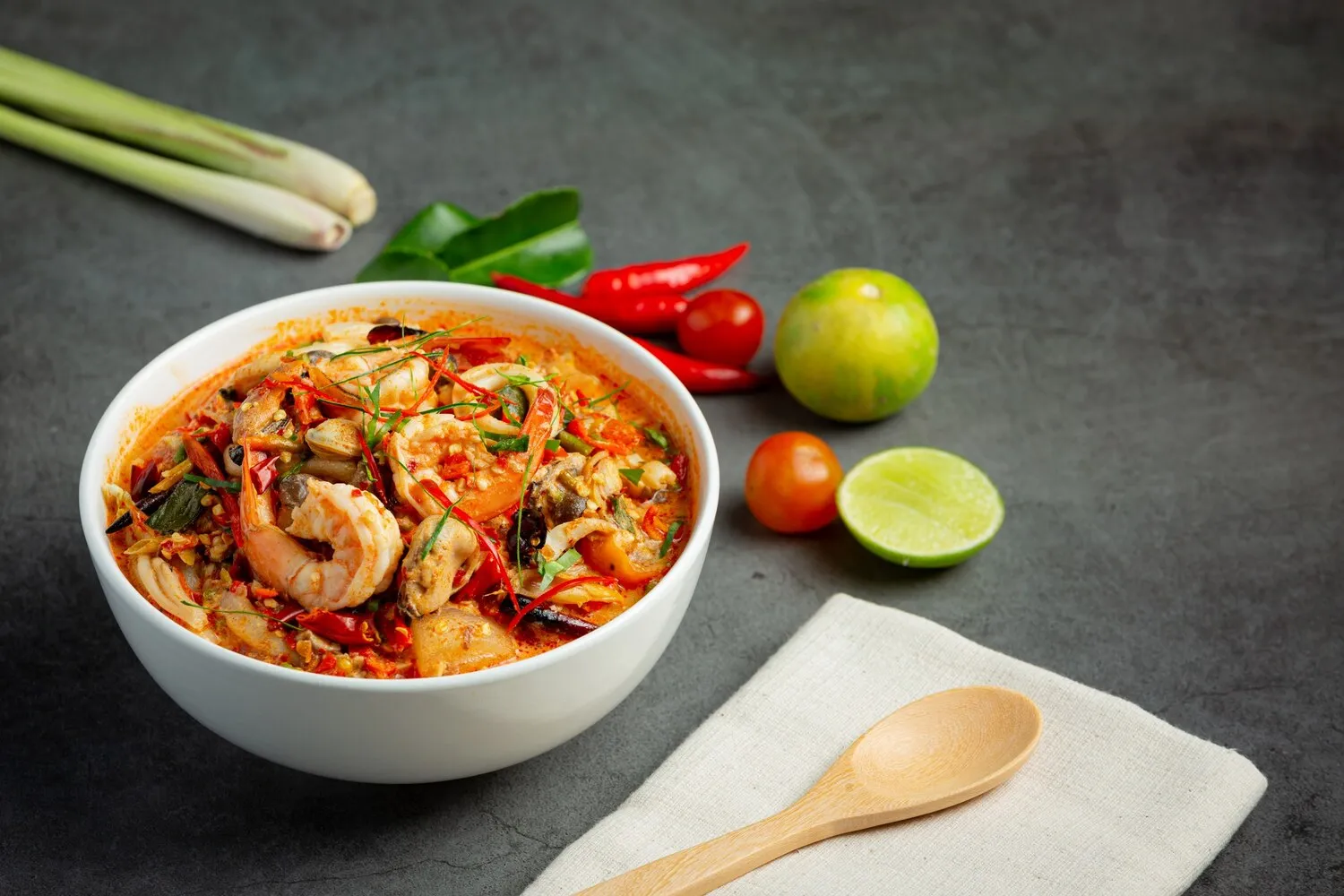
Noodle Soups
Besides Ramen, Xu Noodle Bar offers various Noodle Soups. These could feature different types of noodles and broths with diverse toppings, reflecting Asian culinary traditions.
Nutrition Facts
* The % Daily Value (DV) tells you how much a nutrient in a serving of food contributes to a daily diet. 2,000 calories a day is used for general nutrition advice.
Noodle soups have a long and varied history across Asia, evolving independently in different regions based on available ingredients and culinary techniques. Influences range from ancient Chinese noodle-making traditions to regional adaptations of broths and toppings using local vegetables, meats, and spices. Trade routes and cultural exchange further contributed to the diversity of noodle soup styles found today.
Noodle soups hold significant cultural importance in many Asian countries, often representing comfort food, family traditions, and regional identity. They are commonly enjoyed as a quick and affordable meal, as well as a celebratory dish during special occasions.
Regional Variations
Each region boasts its own unique style of noodle soup, reflecting local ingredients and culinary preferences. For example, Pho is synonymous with Vietnam, while Laksa represents Southeast Asia.
Symbolism
Long noodles often symbolize longevity and are traditionally eaten during birthdays or New Year celebrations.
Social Gathering
Noodle soup restaurants are popular gathering places for friends and families, providing a communal and affordable dining experience.
The flavors of Asian noodle soups are incredibly diverse, ranging from savory and umami-rich to spicy, sour, and aromatic. The interplay of broth, noodles, and toppings creates a complex and satisfying culinary experience.
Broths can be made from a variety of bases, including chicken, pork, beef, fish, or vegetables. These broths are often seasoned with ingredients such as soy sauce, fish sauce, miso, ginger, garlic, chili, and various spices. Noodles can vary in thickness, shape, and composition, ranging from wheat-based noodles to rice noodles and glass noodles. Toppings add further layers of flavor and texture, and can include sliced meats, seafood, vegetables, herbs, and garnishes such as scallions, cilantro, and sesame seeds. Common flavor profiles include savory, umami, spicy, tangy, aromatic, and refreshing.
Customize Your Soup
Don't be afraid to add extra chili oil, vinegar, or other condiments to adjust the flavor to your liking. Many restaurants provide a selection of sauces and spices for this purpose.
Noodle Etiquette
Slurping noodles is often considered acceptable and even encouraged, as it enhances the flavor and helps cool the noodles down.
Fresh Ingredients
Look for noodle soups that use fresh, high-quality ingredients, as this will greatly impact the overall flavor and experience.
Explore additional Soup dishes and restaurants
Explore SoupDiscover top dining spots and culinary experiences in Tilburg.
Explore TilburgLearn more about the food culture, restaurant scene, and culinary heritage of Netherlands.
Explore Netherlands